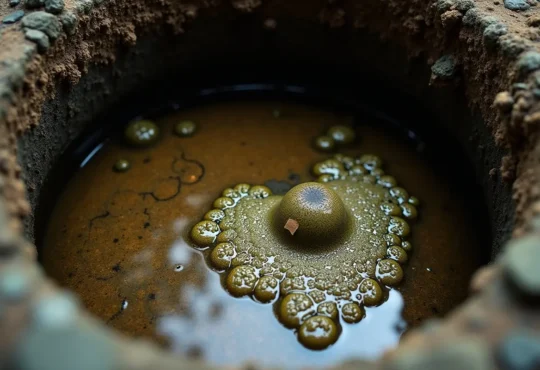
How to Replace Sink Faucet
Breathing new life into your kitchen or bathroom is easier than you might think – with a faucet replacement project. Replace your sink faucet to instantly revitalize the aesthetics and functionality of the sink area, eliminating pesky leaks, cracks, and outdated designs that plague your old faucet.
Contrary to popular belief, you don’t need specialized plumbing expertise to tackle this DIY task successfully. All you need is a bit of elbow grease, some basic tools, and the right guidance.
Contents
Identifying the Need for a New Faucet
Before replacing, assess if your faucet needs an upgrade. Minor issues like drips and stiff handles can be repaired. However, some signs indicate a full replacement is necessary. Here are the telltale indicators that it’s time to bid farewell to your old faucet:
Persistent Leaks and Low Water Pressure
Frequent leaks not only waste water and drive up utility bills but can also lead to more severe problems like mold growth, cabinet damage, and structural issues if left unchecked. Similarly, low water pressure caused by leaks can be a frustrating inconvenience, making simple tasks like filling pots or washing dishes a chore.
Cracks, Breaks, and Visible Damage
Over time, faucets can develop cracks in the handle, base, or spout, leading to leaks and compromising their structural integrity. If you notice visible damage or breaks, it’s generally more cost-effective and reliable to replace the entire unit rather than attempting repairs.
Constant Need for Repairs
If you find yourself scheduling plumbing appointments every few weeks to address recurring faucet issues, it’s a clear sign that the unit has reached the end of its lifespan. Frequent repairs can quickly become more expensive and time-consuming than a one-time replacement.
Outdated Style or Functionality
Faucets are not just functional necessities but also contribute to the overall aesthetic appeal of your kitchen or bathroom. If your current faucet clashes with a newly renovated space or lacks desired features like a pull-down sprayer or touchless operation, it may be time for an upgrade that aligns with your style and needs.
Stubborn Stains and Discoloration
Porcelain faucets can lose their protective glaze over time, leading to unsightly stains and discoloration that can be challenging to remove. In such cases, replacing the faucet is often the only way to restore a pristine, spotless appearance.
Once you’ve determined that a faucet replacement is in order, it’s time to gather the necessary tools and materials and prepare for the installation process.
Tools and Materials Needed
Before starting your faucet replacement project, ensure you have the following tools and materials on hand:
Tools
- Adjustable wrench or basin wrench (recommended for easier access in tight spaces)
- Safety glasses
- Bucket
- Flashlight
- Utility knife
- Paper towels
- Kitchen cleaner
Materials
- New sink faucet kit with sprayer (choose a style and finish that complements your space)
- Silicone sealant (optional, for filling gaps between the faucet base and sink)
- Braided supply line hoses (optional, if replacing old supply lines)
Having these essentials readily available will streamline the process and prevent unnecessary delays or interruptions.
Step-by-Step Guide to Replacing a Sink Faucet
Now that you’ve gathered the necessary tools and materials, it’s time to roll up your sleeves and dive into the faucet replacement process. Follow these step-by-step instructions to ensure a smooth and successful installation:
1. Prepare the Work Area
Clear out the area under the sink, removing any items that hinder access or movement. Clean mold, water, and debris from the cabinet floor to create a safe workspace. Lay a plywood panel or ironing board across the cabinet opening for back support, and place your tools within easy reach.
2. Turn Off the Water Supply
Locate the water supply valves under the sink, typically marked with red for hot water and blue for cold water. Turn these valves clockwise to shut off the water supply completely. Once the water is turned off, open the faucet to release any remaining water pressure in the lines.
3. Disconnect the Old Faucet
With the water supply turned off, it’s time to disconnect the old faucet. Start by unscrewing the water supply lines from the faucet base using an adjustable wrench or basin wrench. Place a bucket underneath to catch any residual water that may drip from the lines.
Next, locate the mounting hardware that secures the faucet to the sink. This may include nuts, screws, or a mounting plate. Use the appropriate tools to loosen and remove these components, allowing you to lift the old faucet from the sink.
If the faucet is stubborn and won’t budge, it may be due to corrosion or mineral buildup. In such cases, gently rock the faucet back and forth to break it free, applying a penetrating lubricant like WD-40 if needed.
4. Clean the Sink Apron
With the old faucet removed, take the opportunity to clean the sink apron thoroughly. Over time, debris and gunk can accumulate in this area, preventing a secure and watertight seal for the new faucet. Use a utility knife or putty knife to scrape away any built-up residue, and then wipe the area clean with a kitchen cleaner and paper towels.
5. Install the Faucet Base
Most new faucet kits come with a rubber or plastic gasket or trim ring designed to create a watertight seal between the faucet base and the sink apron. Follow the manufacturer’s instructions to install this gasket or apply a thin layer of plumber’s putty if recommended.
Next, carefully feed the faucet body and supply lines through the sink holes. Secure the faucet base from underneath with the provided mounting hardware. Hand-tighten initially, then use appropriate tools to securely tighten, avoiding over-tightening to prevent damage.
6. Connect the Supply Lines
If your new faucet kit includes braided supply line hoses, connect them now. Attach the red hot water line to the hot water inlet and the blue cold water line to the cold water inlet. Tighten these connections securely with an adjustable wrench, but avoid over-tightening to prevent leaks.
If you’re reusing the existing supply lines, inspect them for any signs of wear or damage. If they appear compromised, it’s best to replace them with new braided supply line hoses to ensure a reliable and leak-free connection.
7. Install the Sprayer (if applicable)
Many modern faucet designs include a pull-down or side sprayer for added functionality. If your new faucet has this feature, follow the manufacturer’s instructions to install the sprayer correctly.
This typically involves feeding the sprayer hose through a designated hole in the sink or faucet body, securing it with a locknut or mounting plate, and then connecting the hose to the appropriate outlet on the faucet base.
8. Test for Leaks
With the faucet installed, test for leaks. Turn on the water supply valves slowly and open the faucet. Check all connections and the faucet base area for leaks, tightening or applying silicone sealant if needed to stop drips or seepage.
Allow the faucet to run for several minutes to ensure that the water flow is consistent and free of any sputtering or air bubbles, which could indicate an improper connection or trapped air in the lines.
9. Enjoy Your New Faucet
If no leaks are detected, congratulations! You’ve successfully replaced your sink faucet. Take a moment to admire your handiwork and the fresh, updated look of your new faucet. With proper care and maintenance, your new faucet should provide years of reliable service and enhance the functionality and aesthetics of your kitchen or bathroom.
Maintenance and Care Tips
To ensure your new faucet remains in top condition for years to come, follow these simple maintenance and care tips:
- Clean the faucet regularly with a mild soap and water solution, avoiding abrasive cleaners that can scratch or dull the finish.
- For mineral buildup or stubborn stains, use a gentle descaling solution or vinegar-based cleaner.
- Periodically check for any signs of leaks or drips, and address them promptly to prevent further damage.
- If the faucet develops a drip, try replacing the washers or cartridges before considering a full replacement.
- Avoid hanging heavy objects from the faucet or sprayer, as this can cause damage or leaks over time.
By following these guidelines, you’ll extend the lifespan of your new faucet and maintain its pristine appearance and performance for years to come.
FAQs
Can you change a sink faucet yourself?
Absolutely! Replacing a sink faucet is a DIY project that most homeowners can tackle successfully with the right tools and guidance. While it may seem daunting initially, the process is relatively straightforward and can be completed in a matter of hours without the need for specialized plumbing expertise.
How difficult is it to replace a sink faucet?
The difficulty level of replacing a sink faucet can vary depending on factors such as the type of faucet, the condition of the existing plumbing, and your familiarity with basic plumbing tasks. However, in most cases, it is considered a relatively easy project for DIYers with some basic knowledge and the right tools.
How do you replace a sink faucet step by step?
Clear the space under the sink and gather tools. Turn off the water, release pressure, and disconnect the old faucet. Clean the sink apron, install the new faucet base, connect supply lines, and install any additional components. Test for leaks and enjoy your new faucet!
How much does a plumber charge to change a sink faucet?
The cost to hire a plumber for replacing a sink faucet varies by location and job complexity, typically $150-$350. If additional plumbing work is needed, the cost increases significantly.
Is it cheaper to repair or replace a faucet?
In most cases, it is cheaper to repair a faucet than to replace it entirely, especially if the issue is minor, such as a dripping faucet or a faulty cartridge. However, if the faucet is severely damaged, outdated, or requires frequent repairs, replacing it may be the more cost-effective and long-term solution.





 Hi I'm Joe.
Hi I'm Joe. 